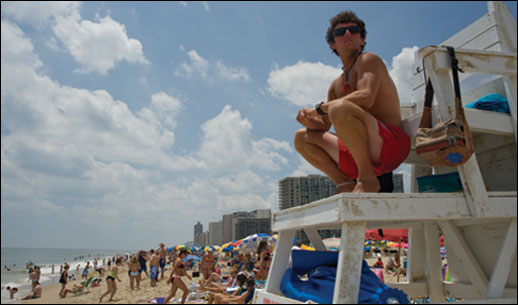|
Keeping Swimmers Safe
August 2009 • Volume 8, Number 3

MICHAEL W. FINCHAM
Beachgoers worry about sharks and lightning, but lifeguards worry about rip currents. Along most American beaches, they are the big killers. On any shore with breaking waves, channels of seaward-flowing water can suddenly open up and sweep swimmers and waders out past the breakers into deeper waters well beyond the beach. Most drownings on American beaches are rip current drownings. Lifeguards and scientists are working to save these swimmers. more . . .
In its heyday, Mayo Beach, like many resorts along the Chesapeake, drew large crowds of city-dwellers. Now a county park, it is in many ways only a shadow of what it once was. more . . .
One Carolina family picks a different place each year to get together. This year they have come to Mayo Beach for fishing, fun, and a family reunion. In an earlier era, they might have gone elsewhere. more . . .
|